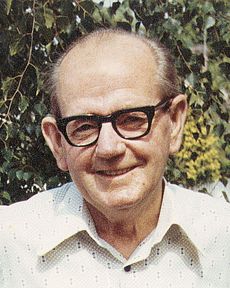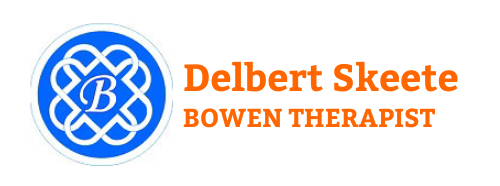About the Bowen Technique
What is the Bowen Technique?
The Bowen Technique is a holistic therapy characterised by gentle, rolling movements that send precise vibrational signals through the body’s tissues. Unlike more forceful modalities, Bowen works on the principle that less intervention creates greater impact, allowing the body to initiate its own healing response.
This remarkable therapy operates at multiple levels:
- Physical: Addressing muscle tension, joint mobility, and structural alignment
- Neurological: Influencing nervous system regulation and pain perception
- Energetic: Supporting the body’s natural energy flow and balance
- Emotional: Facilitating release of stress patterns held in tissue memory
Through its gentle approach, Bowen encourages the body to shift from a state of stress to one of relaxation, where true healing can occur naturally and efficiently.
How Does the Bowen Technique Work?
At the heart of the Bowen Technique is a profound understanding of the body’s intrinsic healing capabilities. The therapy works through several key mechanisms:
The Extracellular Matrix Connection
Bowen practitioners apply a series of precise “moves” at specific points across the body. These gentle movements create vibrational signals that travel through the Extracellular Matrix (ECM)—the continuous network of connective tissue that surrounds every cell in the body.
The ECM serves as both a structural support system and a communication network, transmitting information between cells and tissues. By interacting with this matrix, Bowen movements initiate a cascade of responses:
- Proprioceptive Reset: Specialised receptors in muscles and fascia receive new information about tension patterns
- Autonomic Response: The nervous system shifts from sympathetic (fight-or-flight) to parasympathetic (rest-and-digest) dominance
- Fascial Release: Connective tissue tensions begin to release and rehydrate
- Cellular Communication: Information travels between different body systems, promoting integration
The Power of Pauses
Uniquely, Bowen incorporates pauses between sets of movements. These pauses are not passive waiting periods but active therapeutic elements that allow the body time to process the information it has received and initiate appropriate responses. The practitioner often leaves the room during these pauses, creating space for the body to respond without external influence.
This approach honours the body’s innate intelligence and timing—allowing it to prioritise healing responses according to its own wisdom rather than imposing an external agenda.
The History of Bowen Therapy
Thomas Ambrose Bowen (1916-1982)
The Bowen Technique was developed by Thomas Ambrose Bowen in Geelong, Australia, beginning in the mid-1950s. What makes Tom Bowen’s story remarkable is that he had no formal medical or therapeutic training, yet developed an approach that would eventually help countless people worldwide.
Tom Bowen possessed extraordinary observational skills and intuition. He began by studying the body’s responses to various touches and movements, gradually refining what would become the Bowen Technique. His approach was pragmatic—keeping what worked and discarding what didn’t.
The Webb Report
In the mid-1970s, the Victorian government in Australia conducted an investigation into alternative healing practices, known as “The Webb Report.” The investigation revealed Tom Bowen’s remarkable efficiency and effectiveness:
- He treated approximately 13,000 people per year
- Patients typically required only 2-3 treatments
- Success rates approached 90% across a wide range of conditions
- He often treated multiple patients simultaneously
These findings are all the more impressive considering Tom was the only practitioner of his technique at the time, working primarily by referral with minimal advertising.
Global Growth
Tom Bowen taught his technique to only a handful of students during his lifetime. After his passing in 1982, these students began sharing the technique more widely. Today, the Bowen Technique is practised in over 40 countries, with several schools teaching variations of Tom’s original work.
While different interpretations exist, all remain true to the core principles that made Bowen’s approach so effective: gentle moves, pauses, and respect for the body’s innate healing wisdom.
The Scientific Understanding
Modern research continues to explore the mechanisms behind the Bowen Technique’s effectiveness. Current scientific understanding suggests several complementary explanations:
Fascial System Influence
Recent research has revealed the extensive role of fascia—the body’s connective tissue network—in health and function. Bowen’s gentle moves appear particularly effective at addressing fascial restrictions and tension patterns that can contribute to pain and dysfunction.
Nervous System Regulation
The Bowen Technique has been shown to influence autonomic nervous system function, promoting a shift from sympathetic (stress) to parasympathetic (relaxation) dominance. This shift creates optimal conditions for healing and recovery processes.
Proprioceptive Reset
By stimulating specialised receptors in muscles, tendons, and joints, Bowen movements may help reset dysfunctional proprioceptive patterns, improving movement coordination and reducing compensatory strain.
Piezoelectric Effect
The specific pressure and direction of Bowen moves may generate piezoelectric signals in connective tissue, creating electromagnetic responses that facilitate cellular communication and tissue repair.
While research continues to evolve, clinical experience consistently demonstrates the technique’s effectiveness across a wide range of conditions.
Experiencing Bowen
Unlike more forceful therapies, a Bowen session feels gentle and non-invasive. Practitioners use their fingers and thumbs to make precise rolling movements over muscles, tendons, and other soft tissues. These moves are performed at specific locations across the body, following sequences designed to address particular conditions or to promote general wellbeing.
A typical session includes:
- An initial consultation and assessment
- Treatment while lying on a comfortable table (though modifications can be made for those who cannot lie down)
- Strategic pauses between sets of moves
- Minimal discomfort—the pressure is adjusted to individual sensitivity
- A sense of deep relaxation during and after treatment
Many people experience immediate relief, while others notice changes developing over days following treatment as the body integrates the work. The technique continues working for several days after a session, which is why practitioners typically recommend waiting 5-7 days between treatments.
Ready to experience the gentle effectiveness of the Bowen Technique? Book your appointment today and take the first step toward natural, balanced well-being.

